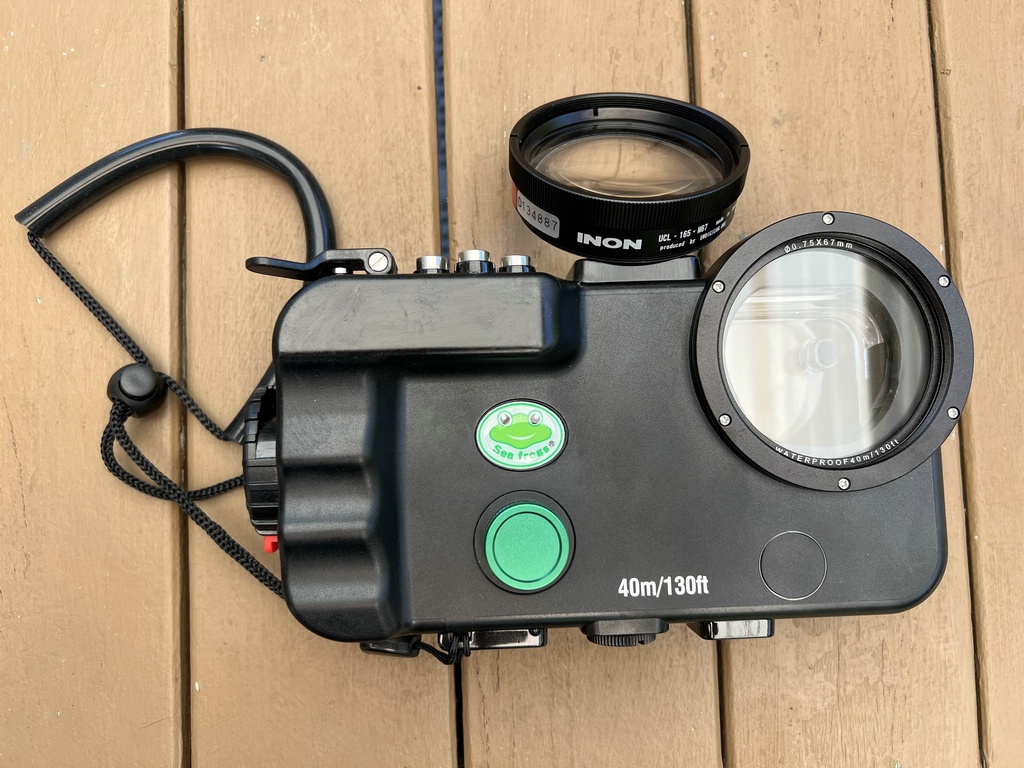Immersed with a smartphone
Colin Gans, November 2021

Outside of my
day to day work with SQL databases, my lockdown pursuits have included projects
related to image print (3D, laser etching) and capture…
For anyone interested in the pursuit of underwater photography: has the time
come to ditch that heavy, expensive, dedicated underwater camera rig that
consumes large amounts of your time and space in favour of a small rectangular
convergent device on which you can post process, print, publish and capture
those images while maintaining an acceptable level of quality?
I’ve used other smartphone housings but yesterday my new Seafrogs housing
arrived and I was up early this morning setting up for its first test in the
bath. I’ve been drawn to this particular one as Bluetooth allows you to navigate
the phone’s camera controls using four directional buttons plus the shutter to
position a cursor on the screen and in particular allows use of pano mode;
something which on a traditional camera takes a great deal of time and effort in
stitching together individual images.
The iPhone 13 Pro’s camera settings including the three focal lengths (0.5, 1x,
3x) and pano mode can be accessed. A few moments of setup and practice are
needed on the phone which must be on, camera app launched and locked in portrait
mode to avoid the buttons changing context.
Setting up the housing hardware was not entirely straightforward which is not
surprising for a design that purportedly caters for 15 different smartphone
models. There were a couple of gotchas on my iPhone 13Pro version. Significant
vignetting was evident on the ultra wide focal length (0.5 / 13mm equivalent)
setting and the phone’s lenses were not correctly centered in the port. To solve
the vignetting issue I had to dust off my Dremel tool to bore out the circle of
the lens port aperture by cutting away some of the plastic. Centering the phone
lenses involved replacing the supplied insert with my own homemade version.
A removable plastic insert is supplied for positioning your specific model of
smartphone in the housing; however the insert provided for my iPhone 13Pro model
failed to centre the iPhone’s three lenses even with the enlarged port aperture.
So I ended up discarding this and super-gluing custom cut EVA closed cell foam
packers around the device for a snug and lens-centered fit. Superglue bonds EVA
foam to plastic rather well but make sure you’re in a well ventilated space when
doing this!
The housing comes with a standard external M67 port thread which is handy for
attaching any macro or wide wet lenses you happen to have lying around
(everybody has these right?). I tried an old Inon macro lens and it worked well
on the 1x and 3x focal lengths.
The phone screen timeout must be disabled and I’ve yet to see how it goes with
the phone overheating in a confined space. Turning on the phone and launching
the camera before water entry will require the housing to be opened. Small
anti-fog sheets are supplied. The housing comes with a vacuum pump but no leak
alarm.
I am trying to get my head around the fact that a part of my life is dependent
on a smartphone and subjecting this vulnerable extension of my mind to depth and
pressure requires a leap of faith. Managing risk through backing up,
pre-immersion checks and attention to detail in prep and maintenance must be
good practice. Maybe also, AppleCare; or perhaps a second phone…
Downsizing to this more portable, convergent solution will hopefully see some
benefits in convenience with acceptable quality in underwater imaging.



|